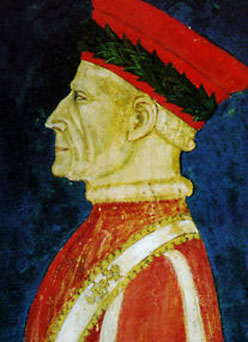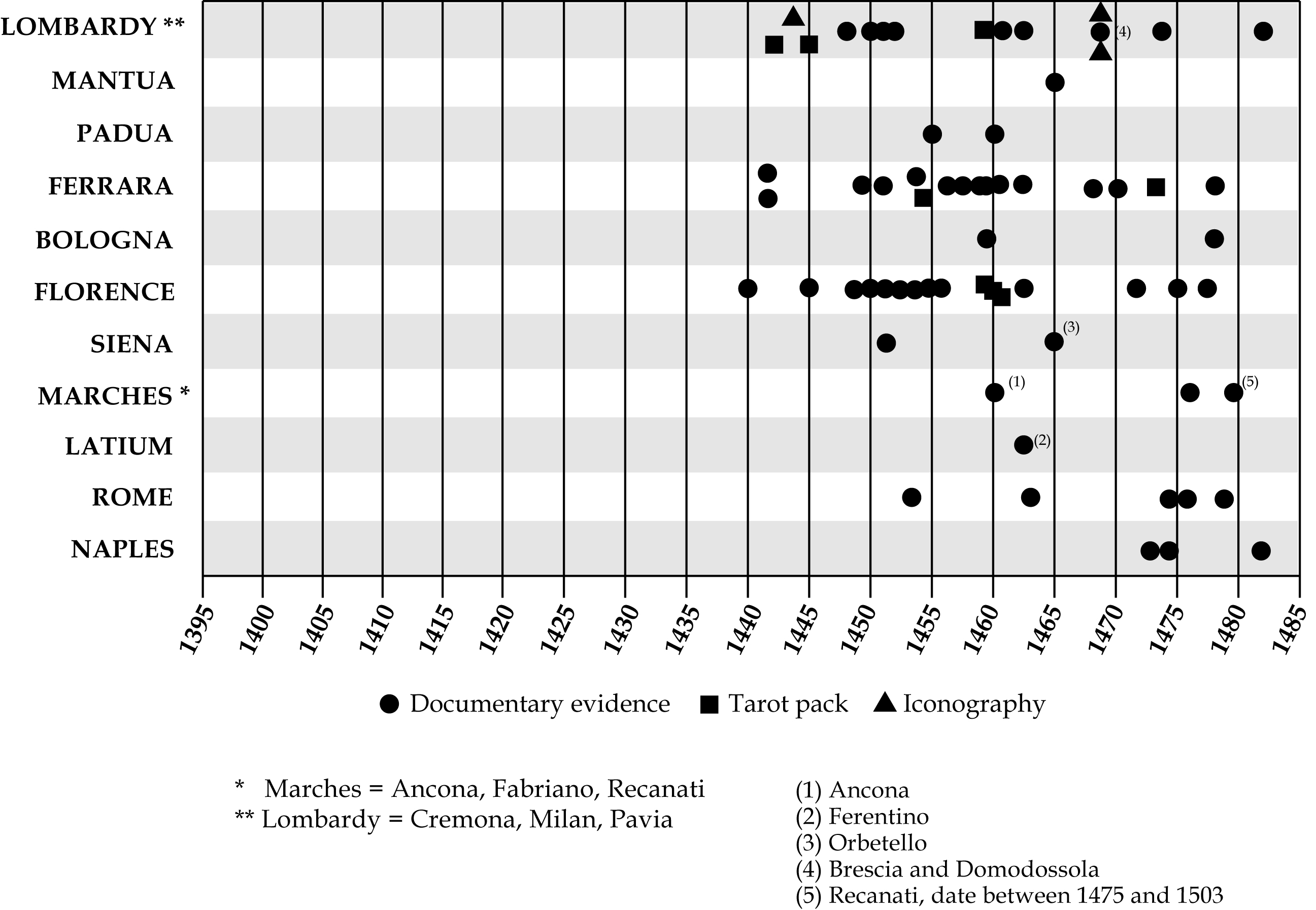Mike,mikeh wrote:I forgot: Phaeded wanted the main points of my argument for 1444. Well, Sandrino and others say 1443-1447 based on the style. Then you have to look and see when in 1443-1447 Filippo and Francesco aren't at odds, hostile to each other. That leaves 1444, the year in which Francesco and Bianca have their first-born. It also concurs with where Ross puts his dot on his scientific-looking chart. Do you want details, too, and if so, which part: the art historians or the biographical information? Thanks for asking, Phaeded; this was the 4th time in the past week in this thread that I mentioned that particular event in connection with the CY, the 5th time in the past year (the previous one was last April), and I don't mind discussing it further. I might even be wrong, who knows.
First-born is certainly commemorative-worthy, succession being just important as a dynastic marriage, but I'm not sure any lengthy phase of Francesco and Filippo's relationship can be categorized as entirely non-hostile, especially 1443-1447. King Alphonse of Aragon took Naples in 1442/43 (once released as a prisoner by Visconti and now essentially a friend to whom his will would bequeath Milan) with Sforza fending off incursions into his Marche and losing his possessions around Naples to his enemy… generally was not serving Filippo's interests in those years but protecting his own. With Piccinino's death in 1445 things entirely imploded with Sforza and Visconti; Visconti attempted to retake the dowry city of Cremona but Venice(!) supported Sforza in retaining it.
The acrimony with Sforza started right after his wedding however when he and Bianca were feted in Venice (she was taken there on the Bucintoro itself via the Po); that political relationship with Venice endured in the face of Sforza’s Visconti marriage with the obvious hope of Venice that if she continued to back Sforza it simply did not matter whom his wife was – they would get Milan through him after Filippo died. Hence Cremona in 1446 and turning him against the Ambrosian Republic in 1448. Perhaps Filippo wasn’t “mad” after all – he had a reason to be paranoid.
But back to Filippo’s mind-set in 1441: Venice was the bigger worry of Filippo (over that of Florence) since the “Veneto” kept encroaching into traditional Visconti holdings. You already know my thoughts on the CY deck – the Chariot has Bianca as bride-to-be holding out the coin of the realm but as Visconti stemma, and the World card shows Sforza riding towards Cremona, with the coastal Veneto in the background (likely Ravenna, the southernmost city of Venice’s sphere of influence, depicted in the middle). Given that Pisanello’s medals were minted in the same year they should likewise be emphasizing the role of Sforza as he who would keep Venice in check (Cremona being an eastern-most base, from Visconti’s view in Milan, from which to do so). Given that premise, I’m backing off my first take of the reverse of Visconti’s medal as the tower of Cremona (it was not beyond mountains from Milan) by examining all its details in more depth for the full context:
1. Small walled city at top left - another eastern-most city of Milan’s periphery with Venice, recently lost again in 1439 to Venice – Bergamo.
2. The mountains: Bergamo is in the foothills of the Alps where much of the Milan/Venice fighting had taken place (particularly on Lago Maggiore whose northern end is spectacularly surrounded by sheer mountain sides) in the campaigns of 1438-1440 when Sforza had been serving Venice. He would have been expected to retake the Bergamasque for Visconti now.
3. A lance of three mounted soldiers. The un-helmed solder on the right is obviously a page, therefore we can assume this is the standard three man lance which consisted of two combatants, a men-at-arms and an armed squire, plus a page. The “squire” (although looks like a full knight here) would be on the left while the frontal-facing knight with the elaborate headdress typical of condottiero would naturally be Sforza. This indication of a mercenary army wearing the standards of Visconti is between the viewer and which city?
4. City in the background: Venice. Pisanello, who painted lost frescos in the Doge’s Palace, knew Venice’s landmark’s well. The details of the city in the medal compared with that of Venice:
a. The towers: The cut-off tower to the right could be any number of campanile in Venice, but the pointed one must be the famous campanile of St. Mark’s. The distinctive vertical masonry lines of that tower are clearly shown in the medal and if the top looks a little off keep in mind that the original wood spire burned down in 1489 so what we are familiar with is a later addition.
b. The domed structure topped with smaller cupola with an odd “weather-vane” structure? The most famous building in Venice of course, St. Mark’s odd Byzantine domes (see photo detail below).
c. The allegorical person – a veiled(?) woman with a hand up to the end of a sword? It could indicate one of the two columns of St. Mark’s Square that opens out to the sea, but St. Theodore holds a lance with just one hand and a shield in the other. The figure of Justice with drawn sword was everywhere in Venice – on the Doge’s palace and on a large relief at the top of the campanile itself. If that is in fact a hand reaching out towards blunting the end of that sword with some object then the message could have been one of challenging the famous message of Venice’s Justice – it’s tip being covered so it is not being administered. Phaeded



